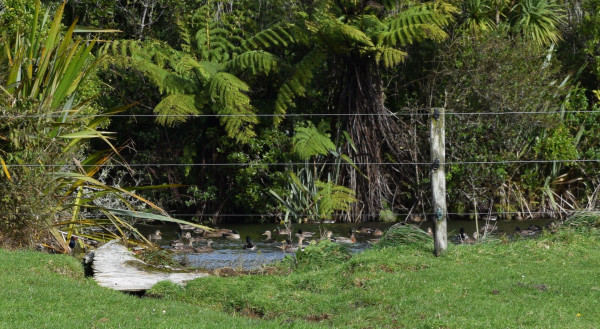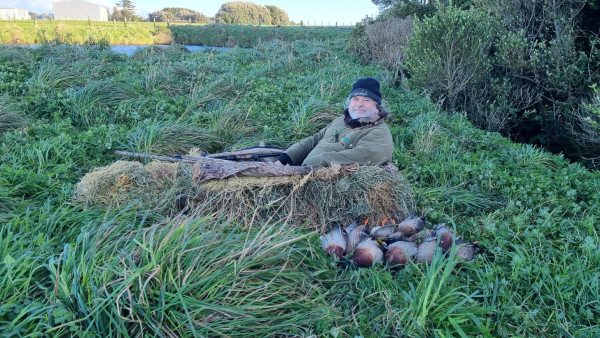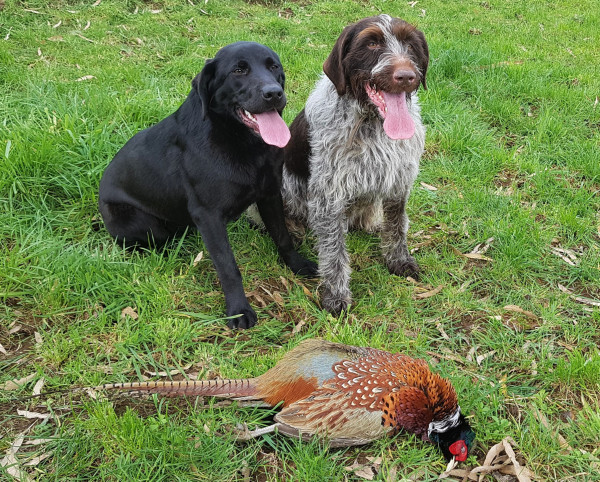Both Barrels June 2024 - Taranaki
- Taranaki
- 20/06/2024
Well, we’re down to our last week of hunting so be sure to make the most of any opportunity you get before the duck season finishes on Sunday June 30.
Farm oxidation ponds and small ponds with plenty of cover that haven’t been shot much or at all during the season are good places for a visit. Hunters are having success setting layout blinds or portable maimais and a handful of decoys instead of jump shooting the ponds, so if you have the means then give it a try if you haven’t already.
At this stage of the season birds are wary and will spook at anything that looks off to them, so make sure you put a bit of extra detail into your decoy spread and a touch more camo into your hide.
Pairs of paradise shelduck are now establishing their breeding territories and defending them from other pairs. There are also flocks of young and non-breeding parries congregating on areas of casual water and even quite small boggy areas at the back of farms. On the Taranaki ringplain, parries seem to be more prevalent on farms up near the mountain, with pairs dotted all round the place. A good opportunity to test out your stalking skills!
 Picture above: Ponds with good cover providing protection from the wind can hold lots of ducks at this time of year.
Picture above: Ponds with good cover providing protection from the wind can hold lots of ducks at this time of year.

Picture above. Hunting an oxidation pond using a layout blind can be very rewarding. Photo by John Meikle
A reminder to return duck bands
If you've successfully harvested a duck with a band this season, we need your help. The band information is crucial to our research and management - so please provide as much detail as possible, including an approximate location. This is for our records only. When our Secretary, Jilli Steedman, receives the weekly update of band returns from our website she will get the information out to you as soon as possible, including the species, sex and age of the bird when banded (adult or juvenile), when & where the bird was banded and the distance between the recovery location and banding site.
The preferred method is to fill out an on-line form via this link.
or else contact the Taranaki Fish & Game office on 0212700239 or email [email protected]
Send in your band details before August 31, and you'll go in the Banding Together draw to win one of five prizes consisting of two boxes of Banded XD (extra detail) decoys. This includes one box of mallards and one box of NZ shoveler decoys.
Harakeke/Tauwhare/Nukumaru Forest access for pheasant hunting
Permits for hunting in Harakeke and Tauwhare forests near Whanganui are available in a weekly draw. To participate in the draw, hunters must obtain a free permit from Taranaki Fish & Game (0212700239 or [email protected]), then prior to noon each Thursday contact Taranaki F&G to go into the draw for a permit for the coming weekend.
Harakeke is divided into two blocks and Tauwhare Forest is a single block, all available on Saturday and Sunday only. Hunters can apply for one or more blocks and/or days but if hunting as a group, then just one application per group. Applicants will be advised of their success or otherwise each Thursday afternoon. Being successful in the draw is a condition of a valid access permit for that particular time and place.
For the Nukumaru hunting area there is no weekly draw, but hunters need a permit from Taranaki Fish & Game and they must contact the respective grazing lessee listed on their permit prior to hunting. A special condition for Nukumaru block’s 4 and 5, in accordance with conditions in the lease agreement with Whanganui District Council, permission must be granted by the lease holder before access to those blocks is permitted.

Picture above: Now’s the time to hunt pheasant (and pukeko). Photo Curly McEwen
Why not go for a pukeko drive
With the hunting season for pukeko running through to 25 August, now is the time to target pukeko. They make for exciting hunting with a dog to flush them from cover and they’re great to hunt when taking people out that are new to the sport. Farmers also appreciate hunters taking birds that cause damage to emerging maize crops or peck holes in silage wrap and silage pit covers. Damp or wet mornings are often the best time to hunt pukes as they come out from cover to feed in paddocks and along stream riparian margins. A walk-up shoot with a line of several hunters and dogs around areas of suitable habitat is often a good way to get onto some pukes. The bag limit for pukeko is 10 per person per day in Area C, and 5 in Areas A and B.